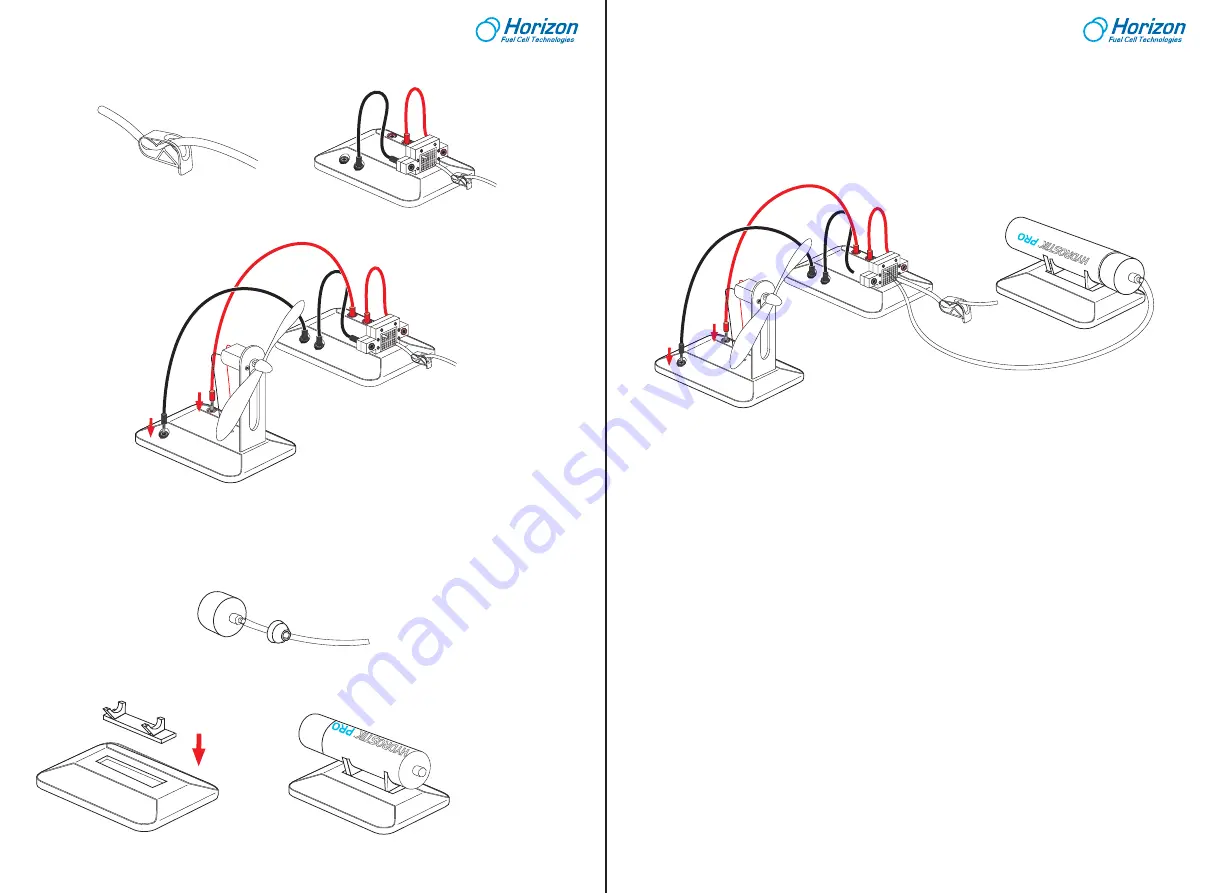
Step 4. Preparing the hydrogen source
Step 5. Power the fan with the hydrogen energy
a. Screw the HYDROSTIK PRO to the pressure regulator tightly.
b. Open the clamp to purge some amount of hydrogen out and then quickly close. The fan will immediately
start to run.
Note:
1. If the fan does not run at this time, it may need to be flicked with your finger to start.
2. After every 10 minutes, it is suggested open the clamp to release some amount of hydrogen out to
ensure the good performance of the fuel cell.
3. Remove the HYDROSTIK PRO from the pressure regulator immediately after use.
Now you may use a multi-meter (not provided) or Horizon’s REM to measure the output voltage & current
produced by the fuel cell or do various experiments.
b. Use the black & red wires to connect the fan module to the fuel cell module.
Make sure you respect the color code when you plug each wire into the corresponding socket.
a. Cut a 15cm long silicon tube. Unscrew the pressure regulator and put the bolt around the tube. Connect the
tube to the pressure regulator.
b. Connect the other end of the tube from the pressure regulator to the remaining nozzle of the fuel cell.
Make sure the connection is tight.
Step 3. Connect the fan to the fuel cell
a. Cut a 6cm long silicon tube. Let the tube go through the clamp. Connect one end of the tube to the inlet of the
fuel cell (lower nozzle). Keep the clamp closed.
c. Place the HYDROSTIK PRO support (j) onto its base (f).
d. Place the HYDROSTIK PRO onto its support.
Fuel cells can be thought of as alternative energy devices. They convert chemical energy into electrical
energy. Hydrogen fuel cells do this very cleanly, with no toxic emissions, and with a high efficiency.
Fuel cells do not generate energy out of thin air. They use hydrogen. Hydrogen is an outstanding carrier of
energy. Hydrogen is non-toxic, renewable, easily obtained, and packed with energy. When it combusts with
oxygen, it turns into water. This water can again be split into hydrogen and oxygen via electrolysis. The
generated hydrogen can be combusted once again, thus undergoing a limitless cycle without toxic emissions.
With a fuel cell, you can convert hydrogen into electric current without combustion.
Fossil fuels are converted into usable energy through combustion. The energy released during combustion is
inherently difficult to capture and inefficient. It also produces carbon dioxide, which cannot easily be converted
back into a usable fuel. A fossil fuel combustion engine at a power plant is only about 30 to 40% efficient. This
means it coverts only 30 to 40% of the energy in the fossil fuels to usable energy (electricity). Engines in a car
are even less efficient, and reach the level of 15 to 20% of efficiency. Where does the rest of the energy go? It
escapes as heat, vibration, and noise.
On the other hand, fuel cells can operate at 40 to 65% efficiency. This means that they can convert 40 to 65%
of the energy contained in hydrogen into electricity.
Why Fuel Cells and Hydrogen?
5
6




















